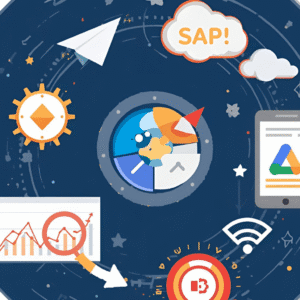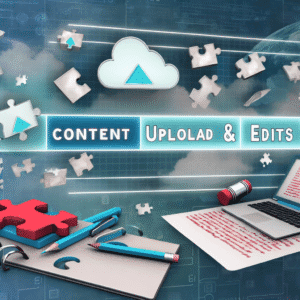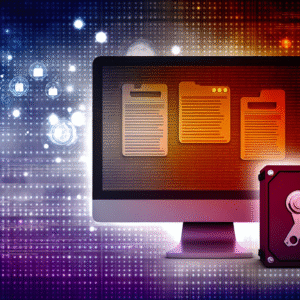Introduction
In today’s hyper-competitive business landscape, products and services are no longer the only differentiators. With endless options at consumers’ fingertips, what truly sets a brand apart is the experience it creates for its customers. Companies that consistently deliver memorable, meaningful, and unique experiences build stronger emotional bonds, inspire loyalty, and foster long-term growth.
But how do you create unique experiences that stand out? The answer lies in rethinking the customer journey and introducing personalized, value-driven interactions. This can be achieved by offering exclusive events, personalized recommendations, and loyalty programs—three pillars that redefine how customers perceive your brand.
Why Customer Experience Matters More Than Ever
Customer experience (CX) refers to the overall impression a customer has of a brand across all touchpoints—before, during, and after a purchase.
✅ 88% of customers say the experience a company provides is as important as its products or services.
✅ 73% of consumers say a good experience influences their brand loyalty.
✅ Positive experiences lead to higher word-of-mouth referrals and brand advocacy.
In short, CX is the foundation of customer retention, brand growth, and sustainable success.
1. Offering Exclusive Events: Building Emotional Connections
Exclusive events make customers feel special and valued. They create community, excitement, and memorable brand moments that go far beyond a simple transaction.
Types of Exclusive Events
- VIP Shopping Experiences – Private previews or styling sessions for top customers.
- Product Launch Events – Invitation-only launches to make customers feel like insiders.
- Workshops & Masterclasses – Skill-building events (e.g., cooking classes, webinars, tutorials).
- Community Meetups – Networking or customer panels that strengthen community ties.
Why Exclusive Events Work
- Create scarcity and excitement.
- Build strong emotional connections.
- Generate buzz and word-of-mouth marketing.
Pro Tip: Always align event style with your target audience’s values—luxury for premium brands, fun and engaging for lifestyle brands, and educational for SaaS or service businesses.
2. Personalized Recommendations: Making Customers Feel Seen
Today’s consumers expect brands to know their preferences. 71% of customers demand personalized interactions—and frustration rises when it doesn’t happen.
Examples of Personalization
- E-commerce: Product suggestions based on purchase history.
- Streaming Platforms: Custom playlists or show suggestions (like Netflix or Spotify).
- Hospitality: Remembering past preferences like room choices or dietary needs.
- Retail Apps: Starbucks app recommending drinks based on weather, location, or past orders.
Benefits of Personalized Recommendations
- Reduce decision fatigue.
- Show customers they are valued as individuals.
- Boost sales through upselling and cross-selling.
How to Implement:
- Use CRM and AI tools to track behavior.
- Segment customers into groups and deliver data-driven suggestions.
- Be transparent about data collection and respect privacy.
3. Loyalty Programs: Rewarding and Retaining Customers
Loyalty programs encourage repeat purchases while making customers feel appreciated.
Types of Loyalty Programs
- Points-Based Systems – Collect points for purchases (e.g., Sephora Beauty Insider).
- Tiered Programs – Rewards increase with levels (e.g., airline frequent flyer tiers).
- Paid Memberships – Perks for members-only (e.g., Amazon Prime, Costco).
- Experience-Based Rewards – Unique perks like VIP events or early product access.
Why Loyalty Programs Work
- Increase customer lifetime value (CLV).
- Build emotional connection and belonging.
- Provide valuable customer insights for personalization.
Best Practices:
- Keep programs simple and rewarding.
- Offer perks that customers actually care about.
- Combine with exclusive events and personalization for maximum impact.
Integrating All Three for Maximum Impact
When exclusive events, personalization, and loyalty programs work together, they create a seamless ecosystem of engagement.
Example 1: Fashion Brand
- Loyalty program with points and tiers.
- Personalized outfit recommendations.
- VIP styling events for top members.
Example 2: SaaS Company
- Credit-based loyalty program for referrals.
- Personalized tutorials based on usage.
- Exclusive webinars for premium customers.
Example 3: Coffee Shop Chain
- Mobile app tracking purchases with rewards.
- Personalized offers (e.g., discounts on favorite drinks).
- Latte art workshops for loyal customers.
Measuring Success
Track the effectiveness of your strategies with these key metrics:
- Customer Satisfaction (CSAT) – Post-purchase surveys.
- Net Promoter Score (NPS) – Likelihood of referrals.
- Customer Retention Rates – Long-term loyalty tracking.
- Customer Lifetime Value (CLV) – Impact of loyalty programs.
- Engagement Metrics – Attendance at events, redemption rates, and recommendation clicks.
Conclusion
Improving customer experience is about going beyond products and transactions. It’s about making customers feel valued, seen, and rewarded.
By offering exclusive events, delivering personalized recommendations, and designing impactful loyalty programs, you can transform ordinary interactions into unforgettable brand experiences.
The most successful brands in today’s marketplace aren’t those with the lowest prices—they’re the ones that make customers feel special, connected, and inspired.
So, what unique experience will you create for your customers today?






